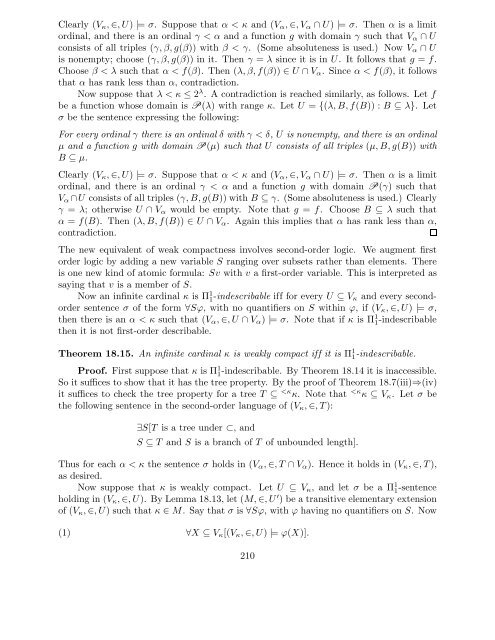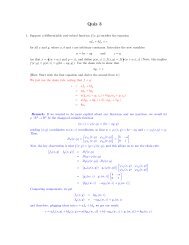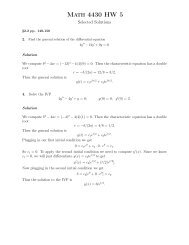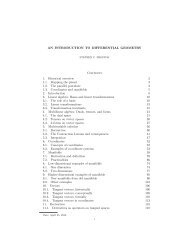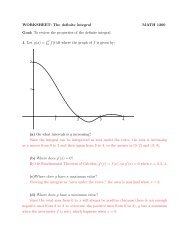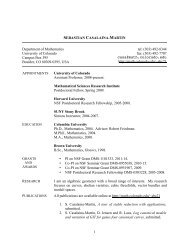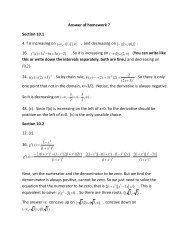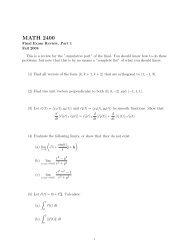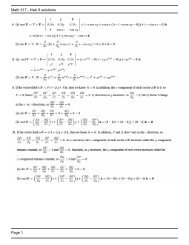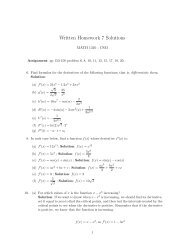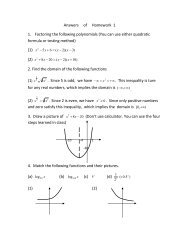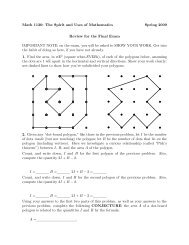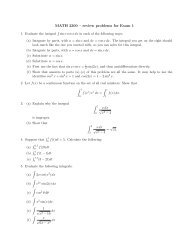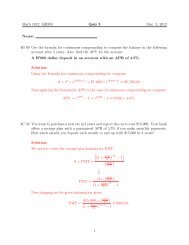18. Large cardinals
18. Large cardinals
18. Large cardinals
You also want an ePaper? Increase the reach of your titles
YUMPU automatically turns print PDFs into web optimized ePapers that Google loves.
Clearly (V κ , ∈, U) |= σ. Suppose that α < κ and (V α , ∈, V α ∩ U) |= σ. Then α is a limit<br />
ordinal, and there is an ordinal γ < α and a function g with domain γ such that V α ∩ U<br />
consists of all triples (γ, β, g(β)) with β < γ. (Some absoluteness is used.) Now V α ∩ U<br />
is nonempty; choose (γ, β, g(β)) in it. Then γ = λ since it is in U. It follows that g = f.<br />
Choose β < λ such that α < f(β). Then (λ, β, f(β)) ∈ U ∩ V α . Since α < f(β), it follows<br />
that α has rank less than α, contradiction.<br />
Now suppose that λ < κ ≤ 2 λ . A contradiction is reached similarly, as follows. Let f<br />
be a function whose domain is P(λ) with range κ. Let U = {(λ, B, f(B)) : B ⊆ λ}. Let<br />
σ be the sentence expressing the following:<br />
For every ordinal γ there is an ordinal δ with γ < δ, U is nonempty, and there is an ordinal<br />
µ and a function g with domain P(µ) such that U consists of all triples (µ, B, g(B)) with<br />
B ⊆ µ.<br />
Clearly (V κ , ∈, U) |= σ. Suppose that α < κ and (V α , ∈, V α ∩ U) |= σ. Then α is a limit<br />
ordinal, and there is an ordinal γ < α and a function g with domain P(γ) such that<br />
V α ∩U consists of all triples (γ, B, g(B)) with B ⊆ γ. (Some absoluteness is used.) Clearly<br />
γ = λ; otherwise U ∩ V α would be empty. Note that g = f. Choose B ⊆ λ such that<br />
α = f(B). Then (λ, B, f(B)) ∈ U ∩ V α . Again this implies that α has rank less than α,<br />
contradiction.<br />
The new equivalent of weak compactness involves second-order logic. We augment first<br />
order logic by adding a new variable S ranging over subsets rather than elements. There<br />
is one new kind of atomic formula: Sv with v a first-order variable. This is interpreted as<br />
saying that v is a member of S.<br />
Now an infinite cardinal κ is Π 1 1 -indescribable iff for every U ⊆ V κ and every secondorder<br />
sentence σ of the form ∀Sϕ, with no quantifiers on S within ϕ, if (V κ , ∈, U) |= σ,<br />
then there is an α < κ such that (V α , ∈, U ∩ V α ) |= σ. Note that if κ is Π 1 1-indescribable<br />
then it is not first-order describable.<br />
Theorem <strong>18.</strong>15. An infinite cardinal κ is weakly compact iff it is Π 1 1 -indescribable.<br />
Proof. First suppose that κ is Π 1 1-indescribable. By Theorem <strong>18.</strong>14 it is inaccessible.<br />
So it suffices to show that it has the tree property. By the proof of Theorem <strong>18.</strong>7(iii)⇒(iv)<br />
it suffices to check the tree property for a tree T ⊆


